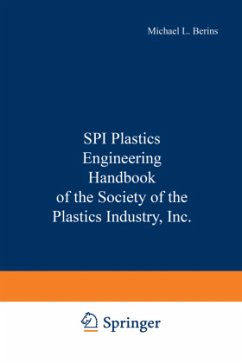
Plastic Materials
Properties and Applications
Herausgegeben von Birley

PAYBACK Punkte
20 °P sammeln!
Plastics are part of everyday life and contribute immensely to the benefit of humanity. When failures occur, they are due in part either to inferior properties (resulting from poor design or badly controlled processing), or to an incomplete understanding of the properties and applications of plastics materials. Since publication of the first edition, the plastics industry has increas ingly adopted advanced business procedures and automation (such as closed loop control and robotics), to combat the effects of recession, and has moved increasingly towards methods based on sound scientific and te...
Plastics are part of everyday life and contribute immensely to the benefit of humanity. When failures occur, they are due in part either to inferior properties (resulting from poor design or badly controlled processing), or to an incomplete understanding of the properties and applications of plastics materials. Since publication of the first edition, the plastics industry has increas ingly adopted advanced business procedures and automation (such as closed loop control and robotics), to combat the effects of recession, and has moved increasingly towards methods based on sound scientific and technological principles. Plastics have increasingly been used in appli cations once dominated by the use of metals and ceramics. For instance, in the automotive industry, the modern car now contains a much higher proportion of polymers, including commodity plastics and more spec ialized materials. In addition, compact discs are being made from new injection-moulding grades of polycarbonate, which meet the requirements of a demanding process. This second edition has been thoroughly revised and extended to include new materials, technologies and design concepts. Chapters on thermoplastics reflect the development of polymer blends and alloys, whilst the chapters devoted to thermosets have been reorganized to accommodate the renaissance in the applications of phenolics and to cover the growing importance of polyurethanes. The related two component process technologies are now included; having undergone major developments in the last decade, they have become important shaping processes.














